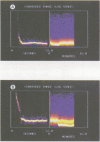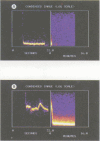Abstract
Drug induced oesophageal injury is an important and preventable cause of iatrogenic injury. In most cases the injury is considered to be due to mucosal contact from formulations lodged in the oesophagus. A scintigraphic study was performed comparing the oesophageal transit of enteric coated tablets with similar sized and shaped gelatin capsules, using a population of elderly healthy volunteers similar in age (50-79 years) to the population most likely to be receiving regular treatment. Twenty three volunteers injected the radiolabelled tablet or capsule with 50 ml of water while sitting on two separate occasions according to a randomisation schedule. Oesophageal transit was assessed by gamma scintigraphy. Gastric residence was also assessed in 11 of 23 subjects. While the tablet was readily cleared from the oesophagus, mean transit time 4.3 seconds (range 1.0-14.0), the capsule often showed a comparatively prolonged holdup, mean transit time 20.9 seconds (range 1.5-174.5). Ten of 11 tablets emptied from the stomach intact, while all 11 capsules broke up in the stomach. Gelatin capsules showed a clear tendency to remain within the oesophagus of healthy elderly volunteers, while similar sized enteric coated tablets did not. These studies show the importance of assessing oesophageal transit when designing the formulation of drugs with a potential for oesophageal injury.
Full text
PDF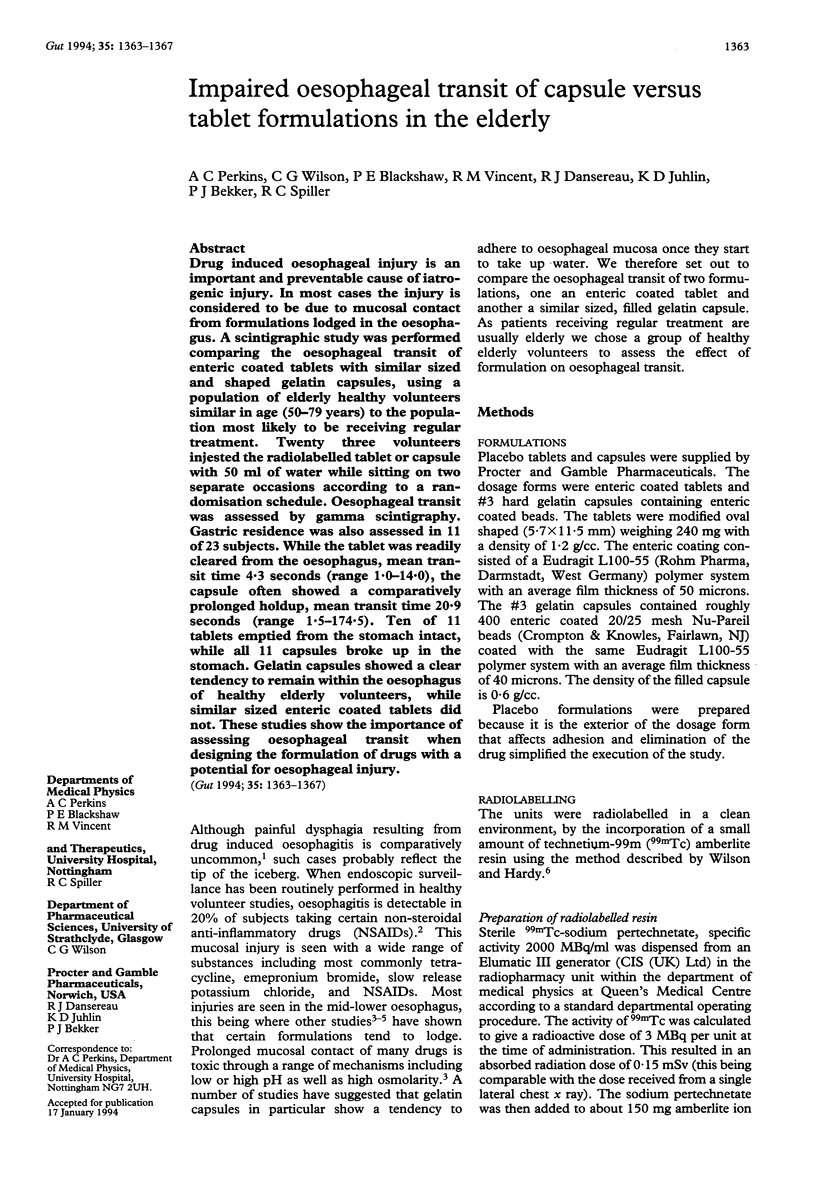
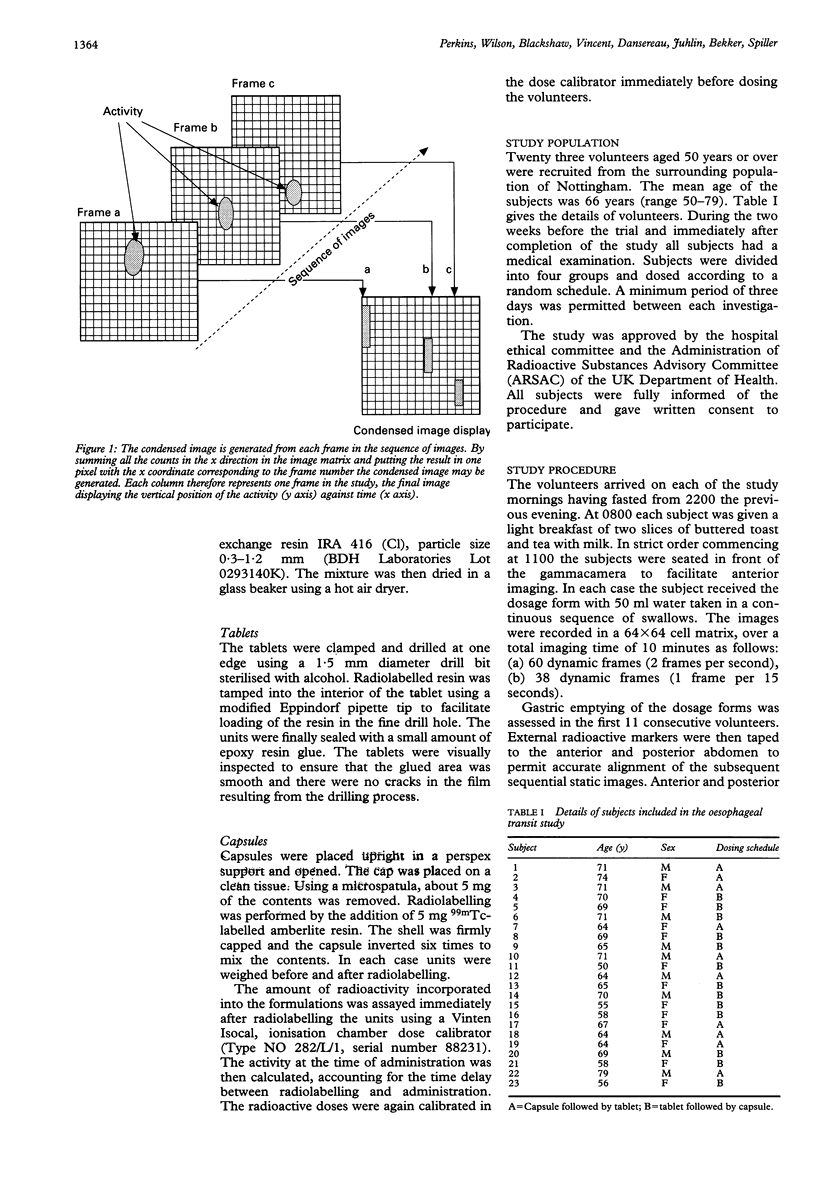

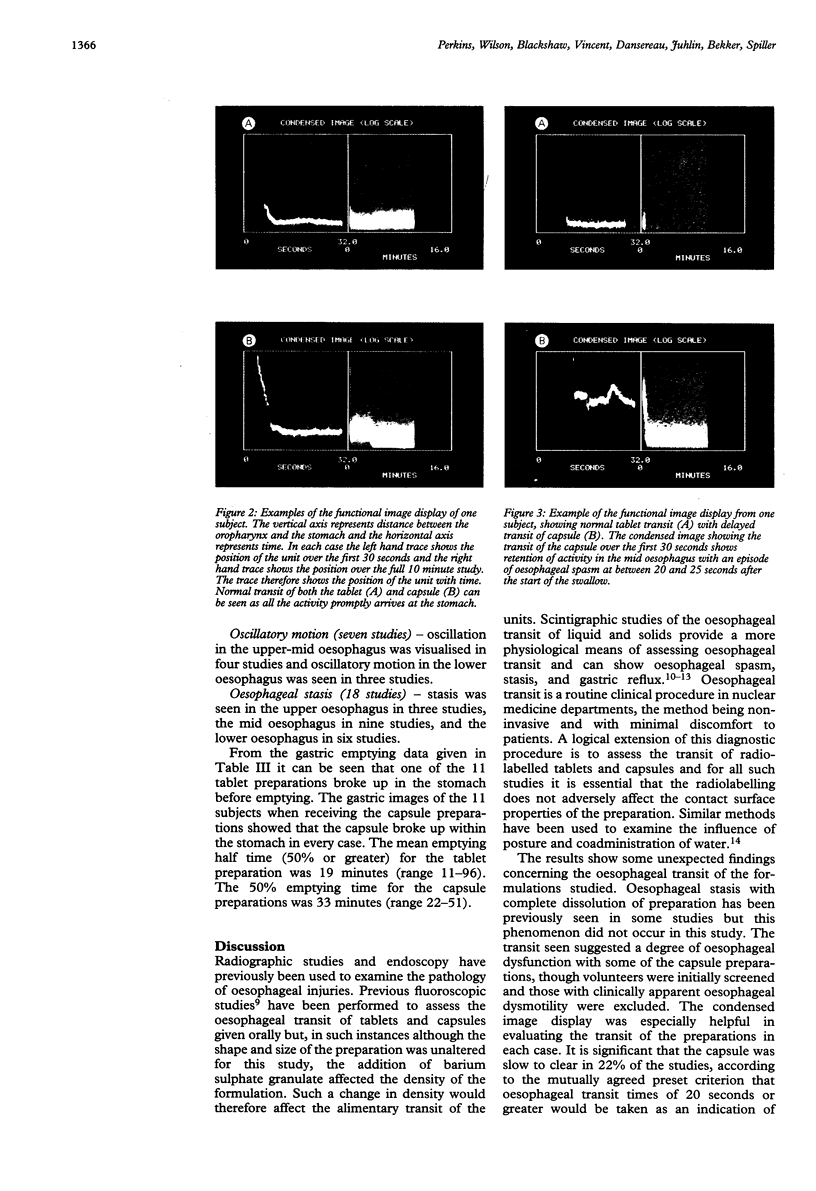

Images in this article
Selected References
These references are in PubMed. This may not be the complete list of references from this article.
- Channer K. S., Virjee J. P. The effect of size and shape of tablets on their esophageal transit. J Clin Pharmacol. 1986 Feb;26(2):141–146. doi: 10.1002/j.1552-4604.1986.tb02922.x. [DOI] [PubMed] [Google Scholar]
- Eng J., Sabanathan S. Drug-induced esophagitis. Am J Gastroenterol. 1991 Sep;86(9):1127–1133. [PubMed] [Google Scholar]
- Evans K. T., Roberts G. M. Where do all the tablets go? Lancet. 1976 Dec 4;2(7997):1237–1239. doi: 10.1016/s0140-6736(76)91158-2. [DOI] [PubMed] [Google Scholar]
- Fisher R. S., Malmud L. S., Applegate G., Rock E., Lorber S. H. Effect of bolus composition on esophageal transit: concise communication. J Nucl Med. 1982 Oct;23(10):878–882. [PubMed] [Google Scholar]
- Ham H. R., Georges B., Guillaume M., Erbsmann F., Dobbeleir A. Evaluation of methods for qualitative and quantitative assessment of esophageal transit of liquid. Eur J Nucl Med. 1985;11(1):17–21. doi: 10.1007/BF00440955. [DOI] [PubMed] [Google Scholar]
- Hardy J. G., Perkins A. C. Validity of the geometric mean correction in the quantification of whole bowel transit. Nucl Med Commun. 1985 Apr;6(4):217–224. doi: 10.1097/00006231-198504000-00005. [DOI] [PubMed] [Google Scholar]
- Hey H., Jørgensen F., Sørensen K., Hasselbalch H., Wamberg T. Oesophageal transit of six commonly used tablets and capsules. Br Med J (Clin Res Ed) 1982 Dec 11;285(6356):1717–1719. doi: 10.1136/bmj.285.6356.1717. [DOI] [PMC free article] [PubMed] [Google Scholar]
- Jørgensen F., Hesse B., Tromholt N., Højgaard L., Stubgaard M. Esophageal scintigraphy: reproducibility and normal ranges. J Nucl Med. 1992 Dec;33(12):2106–2109. [PubMed] [Google Scholar]
- Kahrilas P. J., Dodds W. J., Hogan W. J. Effect of peristaltic dysfunction on esophageal volume clearance. Gastroenterology. 1988 Jan;94(1):73–80. doi: 10.1016/0016-5085(88)90612-9. [DOI] [PubMed] [Google Scholar]
- Kahrilas P. J., Dodds W. J., Hogan W. J., Kern M., Arndorfer R. C., Reece A. Esophageal peristaltic dysfunction in peptic esophagitis. Gastroenterology. 1986 Oct;91(4):897–904. doi: 10.1016/0016-5085(86)90692-x. [DOI] [PubMed] [Google Scholar]
- Kikendall J. W., Friedman A. C., Oyewole M. A., Fleischer D., Johnson L. F. Pill-induced esophageal injury. Case reports and review of the medical literature. Dig Dis Sci. 1983 Feb;28(2):174–182. doi: 10.1007/BF01315148. [DOI] [PubMed] [Google Scholar]
- Klein H. A., Wald A. Computer analysis of radionuclide esophageal transit studies. J Nucl Med. 1984 Sep;25(9):957–964. [PubMed] [Google Scholar]
- Pemberton J. Oesophageal obstruction and ulceration caused by oral potassium therapy. Br Heart J. 1970 Mar;32(2):267–268. doi: 10.1136/hrt.32.2.267. [DOI] [PMC free article] [PubMed] [Google Scholar]
- Santucci L., Patoia L., Fiorucci S., Farroni F., Favero D., Morelli A. Oesophageal lesions during treatment with piroxicam. BMJ. 1990 Apr 14;300(6730):1018–1018. doi: 10.1136/bmj.300.6730.1018-b. [DOI] [PMC free article] [PubMed] [Google Scholar]
- Svedberg J. B. The bolus transport diagram: a functional display method applied to oesophageal studies. Clin Phys Physiol Meas. 1982 Nov;3(4):267–272. doi: 10.1088/0143-0815/3/4/002. [DOI] [PubMed] [Google Scholar]
- Tolin R. D., Malmud L. S., Reilley J., Fisher R. S. Esophageal scintigraphy to quantitate esophageal transit (quantitation of esophageal transit). Gastroenterology. 1979 Jun;76(6):1402–1408. [PubMed] [Google Scholar]
- Wilson C. G., Hardy J. G. Gastrointestinal transit of an osmotic tablet drug delivery system. J Pharm Pharmacol. 1985 Aug;37(8):573–575. doi: 10.1111/j.2042-7158.1985.tb03071.x. [DOI] [PubMed] [Google Scholar]



